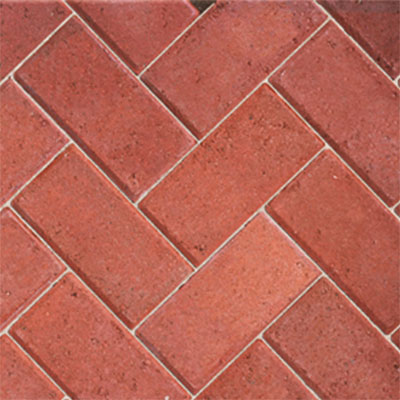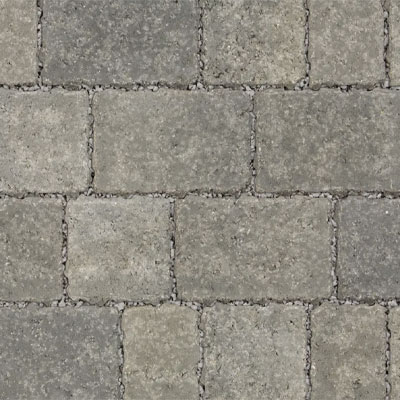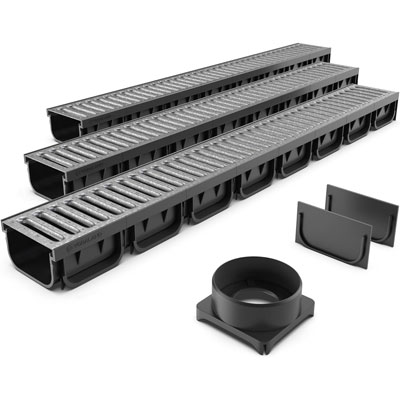The secrets to getting driveway drainage spot on, as revealed by experts
Careful planning and thoughtful design is key to ensuring your driveway drainage can cope with everything the British weather throws at it

If you want your beautiful new driveway to stay looking that way, driveway drainage is something you need to be taking seriously. No matter how much research you have put into your driveway ideas, get this one element wrong and the whole thing could be ruined.
Drainage is important when it comes to good driveway design for a number of reasons. Not only will it reduce the risk of flooding, but it is also a requirement of the building regulations.
To ensure your driveway not only adds to the kerb appeal of your home, but also performs as it should, we reached out to the experts for their advice on how to get the drainage aspect spot on.
Why is driveway drainage important?
There are several reasons why drainage is so crucial when it comes to driveway design, as Turrou Landesmann, director of trading at Drainage Superstore explains.
"Driveway drainage is essential for maintaining the functionality and longevity of your driveway, especially in the UK where heavy rainfall is quite common," says Turrou. "Proper driveway drainage helps prevent various issues, including flooding, erosion and damage to the driveway surface and the rest of your property."
In addition, pools of standing water can pose a safety risk, particularly in freezing weather.
Thankfully, there are several different drainage methods you can use to ensure your driveway requires minimal maintenance, conforms to the building regs and withstands heavy use for many years to come.
Bring your dream home to life with expert advice, how to guides and design inspiration. Sign up for our newsletter and get two free tickets to a Homebuilding & Renovating Show near you.
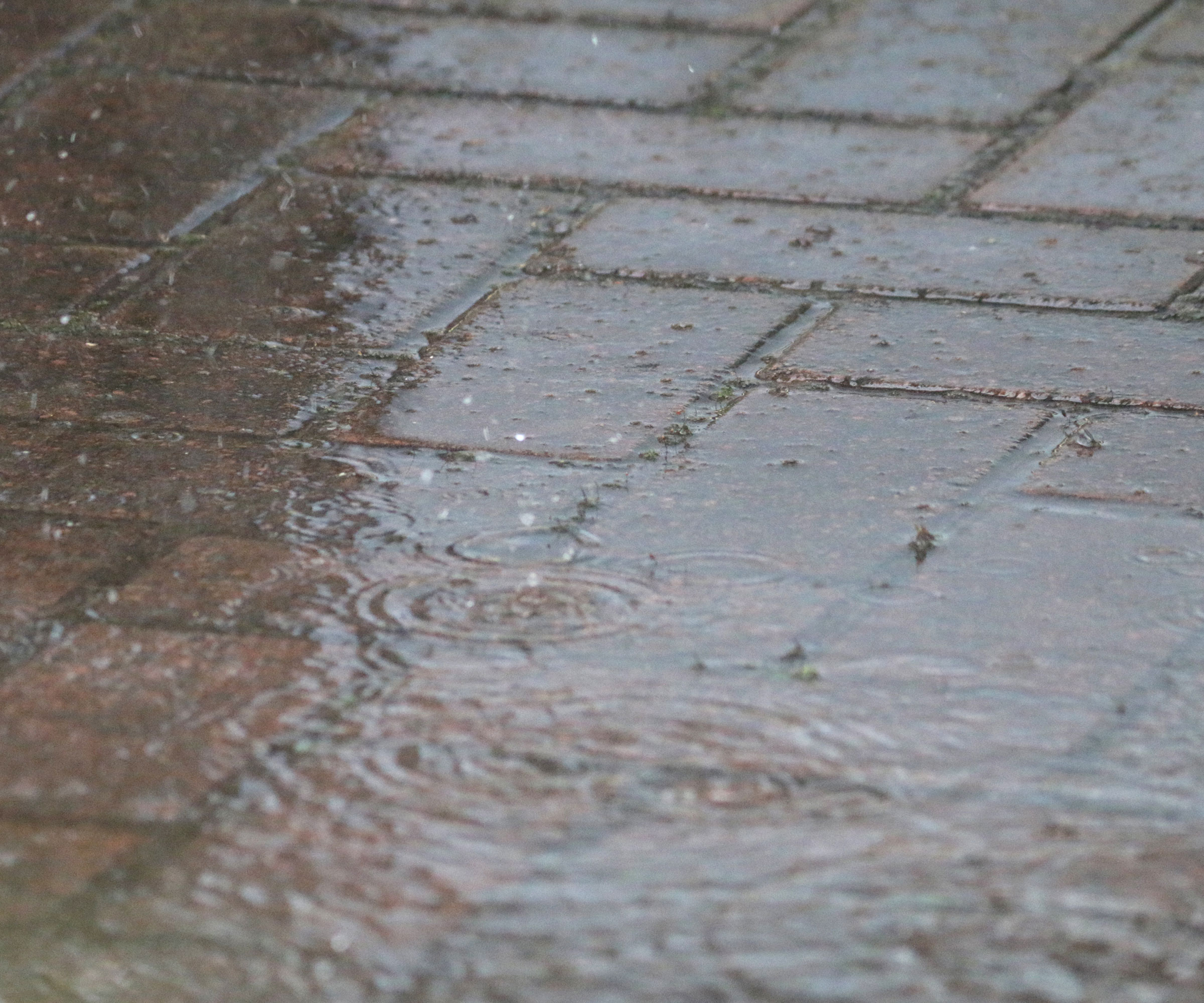

Turrou Landesmann is trading manager at Drainage Superstore, a company that was launched in 2009 as an online supplier with knowledgeable customer service.
Opt for a permeable driveway material
The material you choose to finish your driveway not only defines its appearance – it will also have an effect on how well water drains away. Gravel driveway ideas are the perfect choice here.
"Gravel driveways are porous, allowing rainwater to seep through," explains Turrou Landesmann. "To enhance drainage, a permeable membrane or geotextile fabric can be placed beneath the gravel to prevent weed growth and encourage water infiltration."
Other good choices include permeable concrete block paving or porous asphalt.
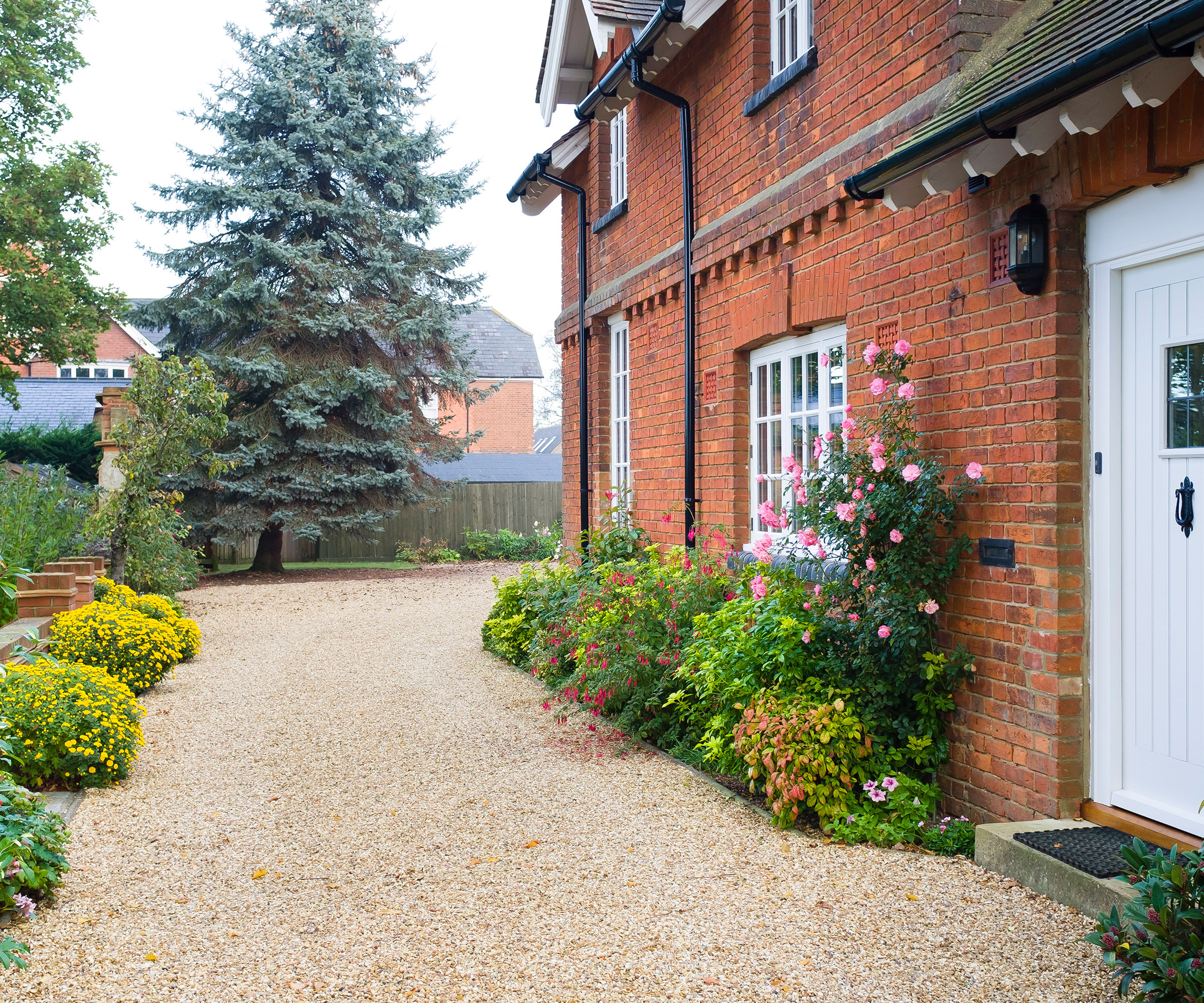
Shop permeable driveway materials
Install channel drains
There are several easy-to-install types of drain that work well and needn't have too much of an impact on your overall driveway costs – channel drains being one of them.
These can be located either to the side of a driveway, or centrally, and will take water away to wherever it is directed. While very effective, it is important to choose the right channel drain for your particular needs.
"Your primary consideration should be how much weight the channel drains are going to be supporting," explains Turrou Landesmann "This is the ‘maximum weight load’."
Fit a French drain on a sloping driveway
French drains are useful for all kinds of situations, from waterlogged gardens to driveways.
"A French drain is a gravel-filled trench with a perforated pipe that collects water and channels it away from the driveway," explains Turrou Landesmann. "This is a good option for driveways located on slopes or in areas with poor soil drainage."
It is actually within the capabilities of the hardy DIYer to construct a French drain. You will need water-permeable non-woven landscape fabric, perforated plastic drainpipes and aggregate – as well as some elbow grease in order to get the trench dug.
Consider your landscaping carefully
If you are pretty much starting from scratch with your front garden driveway ideas, the way in which you design the driveway itself can help hugely with drainage.
"Proper design with a slight slope can encourage water to run off the driveway and into a designated drainage area," explains Turrou Landesmann. "This method is common in driveways with paving or concrete surfaces."
Not just any old slope will do though, the angle needs to be just right.
"The drainage angle for a driveway typically ranges between 1% to 2%, or 1/8″ to 1/4″ of slope per foot," he adds. "This slope is designed to ensure effective water run-off and prevent standing water on the driveway surface.
"A 1% slope is equivalent to a 1/8″ drop in elevation for every 1 foot of horizontal distance," continues Turrou. "For example, if you have a 20-foot-long driveway, it should have a 1/8″ x 20 = 2.5″ of elevation drop from the high point to the low point to provide a 1% slope."
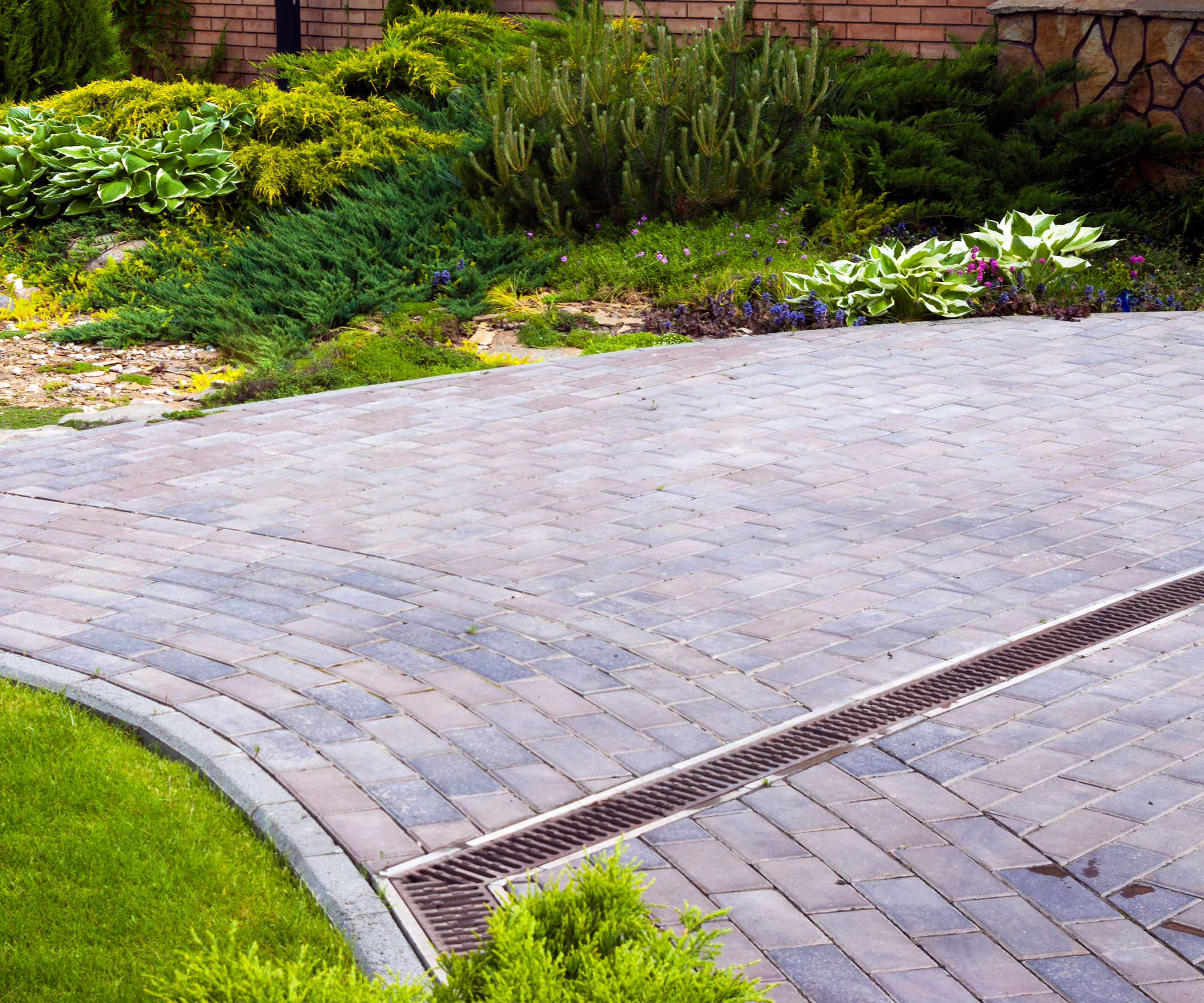
Soakaways for driveways
Soakaways are a great way to prevent surface water, often used in combination with good design techniques so that the fall of the driveway diverts excess water into the soakaway effectively.
A soakaway is basically a hole in the ground designed to take the water directed into it, allowing it to gradually 'soak away' into the soil. The hole will usually be filled with specially-designed plastic crates or rubble and gravel, before being covered over with a permeable material.
What are the building regulations for driveway drainage?
Whether or not you will need building regulations approval for your driveway drainage depends on its size, as well as how you plan on dealing with surface water drainage.
"Driveway regulations in the UK exist specifically to prevent flooding and the presence of standing water," says Turrou Landesmann "They state that if your driveway is bigger than 5m2, you have to incorporate a suitable drainage solution. If you don’t, you simply won’t get planning permission."

FAQs
Is planning permission required for a new driveway?
Planning permission for driveways should not be required, providing you have adhered to the requirements of the building regulations concerning drainage.
"Planning permission is not required for a new or replacement driveway, regardless of its size, as long as it employs permeable (or porous) materials like gravel, permeable concrete block paving or porous asphalt," confirms Turrou Landesmann. "Likewise, if rainwater is naturally directed to a lawn or border for drainage, planning permission is not necessary."
It really is worth looking into sustainable drainage systems (SuDS), not just to ensure your driveway is complying with the latest building regulations but also to ensure your home won't be affected by flash flooding.
Natasha was Homebuilding & Renovating’s Associate Content Editor and was a member of the Homebuilding team for over two decades. In her role on Homebuilding & Renovating she imparted her knowledge on a wide range of renovation topics, from window condensation to renovating bathrooms, to removing walls and adding an extension. She continues to write for Homebuilding on these topics, and more. An experienced journalist and renovation expert, she also writes for a number of other homes titles, including Homes & Gardens and Ideal Homes. Over the years Natasha has renovated and carried out a side extension to a Victorian terrace. She is currently living in the rural Edwardian cottage she renovated and extended on a largely DIY basis, living on site for the duration of the project.
